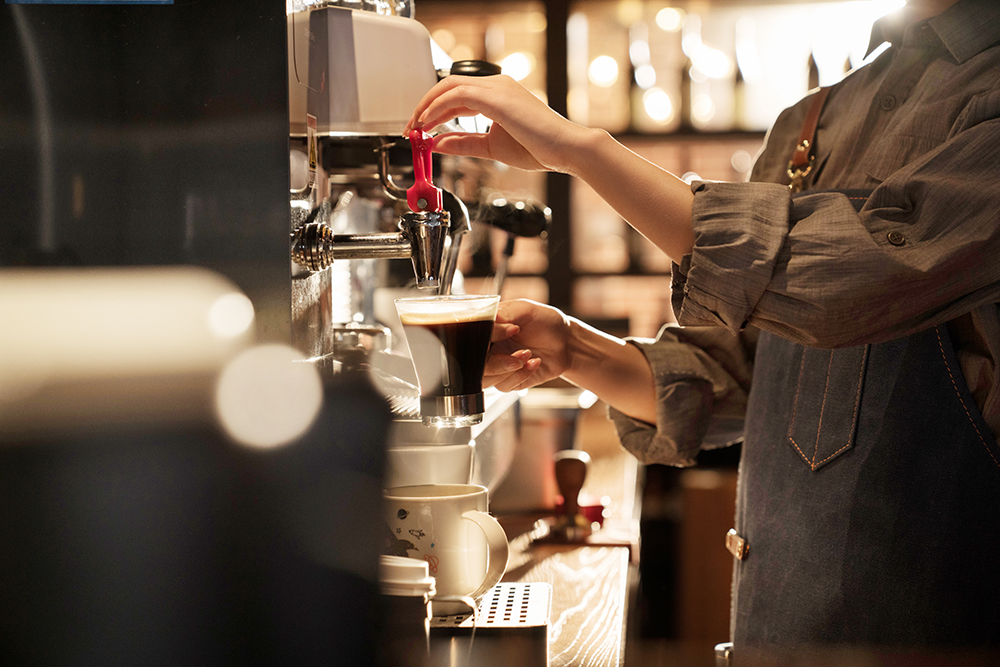Why Pump Pressure Can Make or Break Your Espresso
A few years back, my friend’s café upgraded to a shiny 20 bar machine, expecting barista-worthy crema on every shot. Instead? Bitter, over-extracted espresso and twice as many technician call-outs. That headache taught us a harsh lesson: Chasing higher bar numbers is like buying a sports car for city traffic – pointless without the right controls. Whether you’re eyeing a 15 bar espresso machine or a 20 bar espresso machine, the magic lies in pressure stability, not the pump’s max capacity.

Decoding the “15 Bar” vs “20 Bar” Hype
- The Bar Myth
That “15 bar” or “20 bar” label? It’s the pump’s maximum muscle, not what hits your coffee grounds. Think of it like a car’s top speed – you’ll never cruise at 200mph daily. - The Sweet Spot
Specialty coffee associations (like SCA) agree: 9 bars is the Goldilocks zone for balanced extraction. It coaxes out nuanced flavors without scalding the beans. - How Machines Hit the Target
A 15 bar espresso machine uses pressure-reducing valves (OPV) to tame the pump down to 9 bars.
A 20 bar machine has more headroom – useful in a rush, but only if it has precision controls to avoid over-extraction.
Pro Tip: Ask manufacturers about the OPV valve (Over-Pressure Valve). If they dodge the question, walk away. This little part is your shot’s guardian angel.
Which Pressure Fits Your Daily Grind?
☕ 15 Bar Espresso Machines: The Home Brewer’s Secret Weapon
Ideal for: Home kitchens, remote offices, low-volume cafes
- Why it shines:
Engineered for stability, not brute force.
Quieter operation (no industrial “hum” at 6 AM!).
Lower maintenance costs – simpler pumps, fewer breakdowns.
- Real Talk:
My home setup is a 15 bar prosumer model. Pulling back-to-back shots for weekend guests? Never had a weak crema.
⚡ 20 Bar Espresso Machines: Built for the Rush Hour
*Ideal for: Cafés slinging 30+ cups/hour, corporate pantries*
- Why it’s different:
Recovers pressure faster between shots – crucial when orders pile up.
Handles dense, lightly roasted beans better if temperature is locked in.
- The Catch:
I’ve seen cafes bleed money on 20 bar machines without PID temp control. Result? Inconsistent shots that alienate regulars.
A Cautionary Tale:
“Bean & Grind” café swapped to a 20 bar system for Saturday rushes. Service sped up, but baristas had to constantly tweak grind size. Their fix? Adding a $200 pressure profiling kit. Lesson: Higher pressure demands smarter tech.
Your No-BS Machine Selection Guide
Follow these steps – no engineering degree needed:
- Count Your Daily Cups
- ≤ 15 cups → 15 bar (save budget for better grinder)
- 30+ cups → 20 bar (only with commercial features)
- Demand Pressure Proof
Look for: - Brew pressure gauge (live pressure reading)
- PID display (temperature accuracy ±1°C)
- OPV valve mentioned in specs
- Test Recovery Time
Ask the vendor: “How long between shot 5 and shot 6 at full steam?”
→ >10 seconds? Skip it. - Maintenance Reality Check
Higher-pressure pumps need: - Quarterly descaling (vs annual for home units)
- Group head seals replaced every 6 months
- Taste Before You Buy
Request an on-site demo. Watch for: - Crema that collapses in 20 seconds → unstable pressure
- Spraying water during pre-infusion → valve issues
Stuck deciding? We’ve helped 200+ clients dodge buyer’s remorse. Contact us for a personalized equipment matrix.
FAQs – Straight From the Service Trenches
Q: Will 20 bar give me thicker crema?
A: Crema comes from fresh beans and proper tamping – not raw pressure. Too-high bars actually shred crema’s delicate bubbles.
Q: My home machine struggles with light roasts. Would 20 bar help?
A: Only if paired with adjustable pre-infusion. Light roasts need slow pressure ramp-up (3-5 sec), not a 20-bar blast.
Q: How do I KNOW my machine holds 9 bars?
A: Tap the group head during extraction. A steady hssss = good. A sputtering/choking sound = pressure drop.
Q: Are commercial 20 bar machines louder?
A: Significantly. Home units hover at ~65 dB (like a blender). Commercial rigs hit 75-80 dB – earplugs recommended!
Q: Can I modify a 15 bar machine for faster recovery?
A: Risky. Retrofit kits exist, but you’ll void warranties. Better to upgrade boilers (e.g., dual vs single).
The Final Call
- For 90% of home brewers:
A precision-tuned 15 bar machine (e.g., Rancilio Silvia Pro X) outperforms cheap 20-bar models. - For high-volume spaces:
Invest in a 20 bar system with commercial-grade controls (La Marzocco Linea Mini). Anything less is false economy.
Remember: Your espresso ritual should fit your life – not a marketing spreadsheet.
Need a real-human opinion? → Email our gear experts with your brew habits. We’ll match you to your dream machine.
Added Value Notes (Blending Human Expertise):
- Barista Hack: “If your pressure gauge flickers wildly, check the OPV valve for scale buildup – it’s the #1 pressure killer.”
- Industry Insight: “Most ’20 bar home machines’ can’t sustain true 20 bar. Lab tests show 70% peak below 17 bar.”
- Cost Saver: “Spend $50 on a portable pressure tester before servicing. Many ‘pressure issues’ are just clogged screens!”

